Showing Spotlights 2169 - 2176 of 2780 in category All (newest first):
 The success of the semiconductor industry has been due in large part to its ability to continuously increase the complexity, and therefore the processing power, of integrated circuits at a given manufacturing cost. Moore?s Law observes that the number of transistors in a computer chip doubles every two years, whilst the cost of making the chip remains the same, due to miniaturization of the components. In order to produce the next generation of computer chips it is necessary to continue to shrink the size of the components on the chip. The miniaturization upon which Moore?s Law rests has been achieved through advances in the photolithographic process used to pattern the components onto to the silicon wafer. A beam of light is projected through a shadow-casting reticule and the light pattern is then directed onto a silicon wafer coated with a photochemically sensitive material, known as a resist. The solubility of the resist is modified by exposure to the light, allowing specific areas of the resist film to be removed, whilst other areas remain as a mask, so that the silicon wafer can be selectively etched, metallized or doped. For many years it has been predicted that the end of photolithography is approaching, and that further miniaturization will require next generation lithography techniques, such as EUV lithography. However, photolithography has proved remarkably resilient, and continues to improve. Unfortunately, whilst the ability of photolithography to pattern small features continues to improve, the industry is beginning to challenge the capabilities of the photosensitive resist.
The success of the semiconductor industry has been due in large part to its ability to continuously increase the complexity, and therefore the processing power, of integrated circuits at a given manufacturing cost. Moore?s Law observes that the number of transistors in a computer chip doubles every two years, whilst the cost of making the chip remains the same, due to miniaturization of the components. In order to produce the next generation of computer chips it is necessary to continue to shrink the size of the components on the chip. The miniaturization upon which Moore?s Law rests has been achieved through advances in the photolithographic process used to pattern the components onto to the silicon wafer. A beam of light is projected through a shadow-casting reticule and the light pattern is then directed onto a silicon wafer coated with a photochemically sensitive material, known as a resist. The solubility of the resist is modified by exposure to the light, allowing specific areas of the resist film to be removed, whilst other areas remain as a mask, so that the silicon wafer can be selectively etched, metallized or doped. For many years it has been predicted that the end of photolithography is approaching, and that further miniaturization will require next generation lithography techniques, such as EUV lithography. However, photolithography has proved remarkably resilient, and continues to improve. Unfortunately, whilst the ability of photolithography to pattern small features continues to improve, the industry is beginning to challenge the capabilities of the photosensitive resist.
Aug 5th, 2008
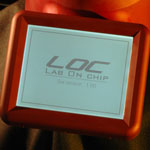 The term biosensing relates to systems that include electronic, photonic, biologic, chemical and mechanical means for producing signals that can be used for the identification, monitoring or control of biological phenomena. The resulting biosensors are devices that employ biological components such as proteins to provide selectivity and/or amplification for the detection of biochemical materials for use in medical diagnostics, environmental analysis or chemical and biological warfare agent detection. Surface plasmon resonance (SPR) has become the technology of choice for label-free detection of proteins and other biomolecules. SPR is based on the excitation of a surface plasmon at the interface between a dielectric and a thin layer of metal, typically gold. Once the sample is covered with the nanostructured gold layer (or another suitable metal), the surface absorbs light at certain wavelength. The absorption maximum is influenced by the refractive index of the fluid at the gold surface. This effect is called localized surface plasmon resonance (LSPR) and it is used for detection of presence of biomolecules, such as specific proteins.
The term biosensing relates to systems that include electronic, photonic, biologic, chemical and mechanical means for producing signals that can be used for the identification, monitoring or control of biological phenomena. The resulting biosensors are devices that employ biological components such as proteins to provide selectivity and/or amplification for the detection of biochemical materials for use in medical diagnostics, environmental analysis or chemical and biological warfare agent detection. Surface plasmon resonance (SPR) has become the technology of choice for label-free detection of proteins and other biomolecules. SPR is based on the excitation of a surface plasmon at the interface between a dielectric and a thin layer of metal, typically gold. Once the sample is covered with the nanostructured gold layer (or another suitable metal), the surface absorbs light at certain wavelength. The absorption maximum is influenced by the refractive index of the fluid at the gold surface. This effect is called localized surface plasmon resonance (LSPR) and it is used for detection of presence of biomolecules, such as specific proteins.
Aug 4th, 2008
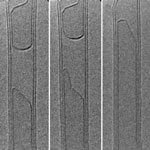 One of the best ways to gain control over synthesis of nanoparticles is to watch it happen. Take carbon nanotubes (CNTs): Synthesis of CNTs is a field that is growing explosively - but there is a lot that nanotechnology researchers don't know about how nanotubes form and grow. While there are a number of in situ characterization methods for nanotube synthesis under development worldwide, each with different strengths and weaknesses, much of the information about the nanotube structure is indirect.
Historically, in situ characterization tools have accelerated progress in synthesis for many advanced materials, and there is widespread recognition that in situ tools have the potential to improve CNT synthesis as well. Ideally one would like to detect individual nanotubes and ensembles as they grow and measure their physical properties while imposing minimal constraints on the synthesis method. In other words, with a good understanding of the synthesis process we would be better able to control the product.
One of the best ways to gain control over synthesis of nanoparticles is to watch it happen. Take carbon nanotubes (CNTs): Synthesis of CNTs is a field that is growing explosively - but there is a lot that nanotechnology researchers don't know about how nanotubes form and grow. While there are a number of in situ characterization methods for nanotube synthesis under development worldwide, each with different strengths and weaknesses, much of the information about the nanotube structure is indirect.
Historically, in situ characterization tools have accelerated progress in synthesis for many advanced materials, and there is widespread recognition that in situ tools have the potential to improve CNT synthesis as well. Ideally one would like to detect individual nanotubes and ensembles as they grow and measure their physical properties while imposing minimal constraints on the synthesis method. In other words, with a good understanding of the synthesis process we would be better able to control the product.
Aug 1st, 2008
 The Office of Technology Assessment at the German Parliament (TAB) has released a massive 266-pages report on Converging Technologies (CT). The report's author, Christopher Coenen, analyses CT-related political initiatives and activities in the USA, European Union and Germany as well as some other countries. Utopian and dystopian long term visions for Converging Technologies and Human Enhancement offer clear potential for social conflict. Most of the discussions have so far been limited to academic circles, but some have reached political relevance. These focus on the relationship between nature and technology and between the grown and the artificial. Differences in views on what it means to be human are central to these disputes. The criticism against promoters of convergence visions is that the feasibility is doubtful and that the views are inspired by political and ideological motives. The report outlines options for actions and the possible requirements for research and he ends his report by suggesting options for research funding.
The Office of Technology Assessment at the German Parliament (TAB) has released a massive 266-pages report on Converging Technologies (CT). The report's author, Christopher Coenen, analyses CT-related political initiatives and activities in the USA, European Union and Germany as well as some other countries. Utopian and dystopian long term visions for Converging Technologies and Human Enhancement offer clear potential for social conflict. Most of the discussions have so far been limited to academic circles, but some have reached political relevance. These focus on the relationship between nature and technology and between the grown and the artificial. Differences in views on what it means to be human are central to these disputes. The criticism against promoters of convergence visions is that the feasibility is doubtful and that the views are inspired by political and ideological motives. The report outlines options for actions and the possible requirements for research and he ends his report by suggesting options for research funding.
Jul 30th, 2008
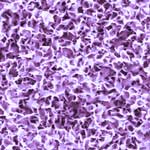 Remember the movie blockbuster Erin Brockovich? The film is based on a real world legal case that revolves around hexavalent chromium, also known as chromium (VI), used by the Pacific Gas and Electric Company to control corrosion in cooling towers in its Hinkley, CA compressor station. Chromium (VI), a natural metal, is known to be toxic and is recognized as a human carcinogen via inhalation. It also is widely used by industry in the manufacture of stainless steel, welding, painting and pigment application, electroplating, and other surface coating processes. Researchers in Germany now have developed a novel method of multilayer anticorrosion protection including the surface pre-treatment by sonication and deposition of polyelectrolytes and inhibitors. This method results in the formation of a smart polymer nanonetwork for environmentally friendly organic inhibitors.
Remember the movie blockbuster Erin Brockovich? The film is based on a real world legal case that revolves around hexavalent chromium, also known as chromium (VI), used by the Pacific Gas and Electric Company to control corrosion in cooling towers in its Hinkley, CA compressor station. Chromium (VI), a natural metal, is known to be toxic and is recognized as a human carcinogen via inhalation. It also is widely used by industry in the manufacture of stainless steel, welding, painting and pigment application, electroplating, and other surface coating processes. Researchers in Germany now have developed a novel method of multilayer anticorrosion protection including the surface pre-treatment by sonication and deposition of polyelectrolytes and inhibitors. This method results in the formation of a smart polymer nanonetwork for environmentally friendly organic inhibitors.
Jul 29th, 2008
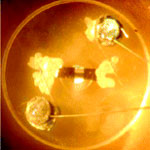 Transparent conductive coatings pervade modern technology and they are a critical component of optoelectronic devices. Today, the most widely used standard coating in nearly all flat panel displays and microdisplays is indium tin oxide. As indium becomes increasingly scarce and expensive, the search for novel transparent electrode materials with good stability, high transparency and excellent conductivity has become a crucial goal for optoelectronic researchers. There are strong and successful efforts from several research groups around the world to develop optoelectronic devices on the basis of individual single-walled carbon nanotubes. This development is of great scientific interest, although there are major challenges in finding technologically feasible ways to assemble the individual nanotube devices into functioning electronic circuits with a high level of integration.
Transparent conductive coatings pervade modern technology and they are a critical component of optoelectronic devices. Today, the most widely used standard coating in nearly all flat panel displays and microdisplays is indium tin oxide. As indium becomes increasingly scarce and expensive, the search for novel transparent electrode materials with good stability, high transparency and excellent conductivity has become a crucial goal for optoelectronic researchers. There are strong and successful efforts from several research groups around the world to develop optoelectronic devices on the basis of individual single-walled carbon nanotubes. This development is of great scientific interest, although there are major challenges in finding technologically feasible ways to assemble the individual nanotube devices into functioning electronic circuits with a high level of integration.
Jul 28th, 2008
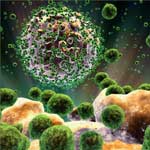 Modern pharmaceutics is a very imprecise, wasteful and sometimes even dangerous discipline. Not only do most drugs fail even before they make it to market (about 80% of drugs never make it through clinical trials) but even the efficacy of many drugs that are being prescribed for certain diseases is questionable. The most important challenge, though, is to deliver the correct dose of a particular therapeutic (small molecules, proteins, or nuclei acids) to a specific disease site. Since this is generally unachievable, therapeutics have to be administered in excessively high doses, thereby increasing the odds of toxic side effects. Nanotechnology offers great visions of improved, personalized treatment of disease. The hope is that personalized medicine will make it possible to develop and administer for each individual patient the appropriate drug, at the appropriate dose, at the appropriate time. The benefits of this approach are accuracy, efficacy, safety and speed. Today, commercial nanomedicine is at a nascent stage of development and the full potential of nanomedicine is years or decades away. Currently the most advanced area of nanomedicine is the development and use of nanoparticles for drug delivery.
Modern pharmaceutics is a very imprecise, wasteful and sometimes even dangerous discipline. Not only do most drugs fail even before they make it to market (about 80% of drugs never make it through clinical trials) but even the efficacy of many drugs that are being prescribed for certain diseases is questionable. The most important challenge, though, is to deliver the correct dose of a particular therapeutic (small molecules, proteins, or nuclei acids) to a specific disease site. Since this is generally unachievable, therapeutics have to be administered in excessively high doses, thereby increasing the odds of toxic side effects. Nanotechnology offers great visions of improved, personalized treatment of disease. The hope is that personalized medicine will make it possible to develop and administer for each individual patient the appropriate drug, at the appropriate dose, at the appropriate time. The benefits of this approach are accuracy, efficacy, safety and speed. Today, commercial nanomedicine is at a nascent stage of development and the full potential of nanomedicine is years or decades away. Currently the most advanced area of nanomedicine is the development and use of nanoparticles for drug delivery.
Jul 25th, 2008
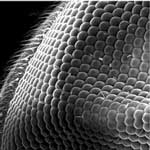 The use of design concepts adapted from nature is a promising new route to the development of advanced materials. There are quite a number of terms such as biomimetics, biognosis, biomimicry, or even 'bionical creativity engineering' that refer to more or less the same thing: the application of methods and systems found in nature to the study and design of engineering systems and modern technology. And increasingly, nanotechnology researchers find naturally occurring nanostructures a useful inspiration for overcoming their design and fabrication challenges. Because biological structures are the result of millennia of evolution, their designs possess many unique merits that would be difficult to achieve by a completely artificial simulation. By replicating the eye of a fruit fly, researchers have now demonstrated a highly reliable and low-cost technique for making inorganic replicas of biotemplates for fabricating complex nanostructures with biologically inspired functionality.
The use of design concepts adapted from nature is a promising new route to the development of advanced materials. There are quite a number of terms such as biomimetics, biognosis, biomimicry, or even 'bionical creativity engineering' that refer to more or less the same thing: the application of methods and systems found in nature to the study and design of engineering systems and modern technology. And increasingly, nanotechnology researchers find naturally occurring nanostructures a useful inspiration for overcoming their design and fabrication challenges. Because biological structures are the result of millennia of evolution, their designs possess many unique merits that would be difficult to achieve by a completely artificial simulation. By replicating the eye of a fruit fly, researchers have now demonstrated a highly reliable and low-cost technique for making inorganic replicas of biotemplates for fabricating complex nanostructures with biologically inspired functionality.
Jul 24th, 2008
 The success of the semiconductor industry has been due in large part to its ability to continuously increase the complexity, and therefore the processing power, of integrated circuits at a given manufacturing cost. Moore?s Law observes that the number of transistors in a computer chip doubles every two years, whilst the cost of making the chip remains the same, due to miniaturization of the components. In order to produce the next generation of computer chips it is necessary to continue to shrink the size of the components on the chip. The miniaturization upon which Moore?s Law rests has been achieved through advances in the photolithographic process used to pattern the components onto to the silicon wafer. A beam of light is projected through a shadow-casting reticule and the light pattern is then directed onto a silicon wafer coated with a photochemically sensitive material, known as a resist. The solubility of the resist is modified by exposure to the light, allowing specific areas of the resist film to be removed, whilst other areas remain as a mask, so that the silicon wafer can be selectively etched, metallized or doped. For many years it has been predicted that the end of photolithography is approaching, and that further miniaturization will require next generation lithography techniques, such as EUV lithography. However, photolithography has proved remarkably resilient, and continues to improve. Unfortunately, whilst the ability of photolithography to pattern small features continues to improve, the industry is beginning to challenge the capabilities of the photosensitive resist.
The success of the semiconductor industry has been due in large part to its ability to continuously increase the complexity, and therefore the processing power, of integrated circuits at a given manufacturing cost. Moore?s Law observes that the number of transistors in a computer chip doubles every two years, whilst the cost of making the chip remains the same, due to miniaturization of the components. In order to produce the next generation of computer chips it is necessary to continue to shrink the size of the components on the chip. The miniaturization upon which Moore?s Law rests has been achieved through advances in the photolithographic process used to pattern the components onto to the silicon wafer. A beam of light is projected through a shadow-casting reticule and the light pattern is then directed onto a silicon wafer coated with a photochemically sensitive material, known as a resist. The solubility of the resist is modified by exposure to the light, allowing specific areas of the resist film to be removed, whilst other areas remain as a mask, so that the silicon wafer can be selectively etched, metallized or doped. For many years it has been predicted that the end of photolithography is approaching, and that further miniaturization will require next generation lithography techniques, such as EUV lithography. However, photolithography has proved remarkably resilient, and continues to improve. Unfortunately, whilst the ability of photolithography to pattern small features continues to improve, the industry is beginning to challenge the capabilities of the photosensitive resist. 
 Subscribe to our Nanotechnology Spotlight feed
Subscribe to our Nanotechnology Spotlight feed





